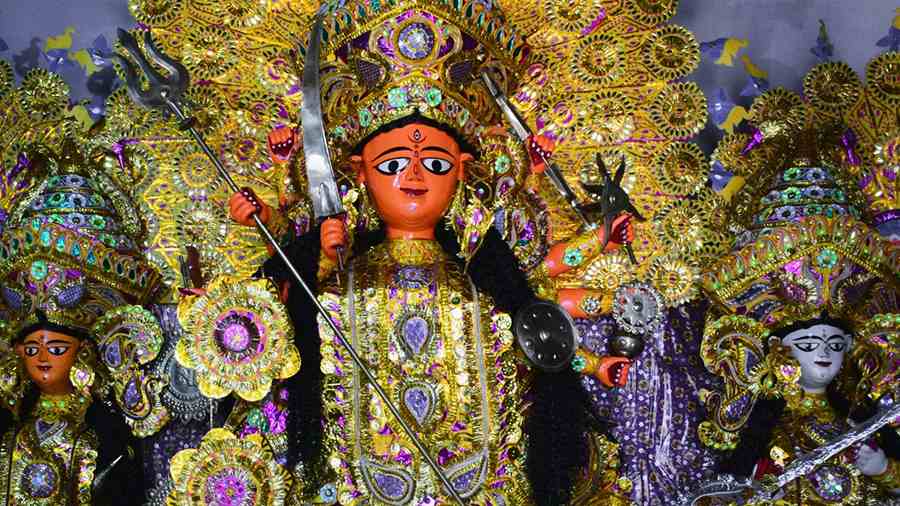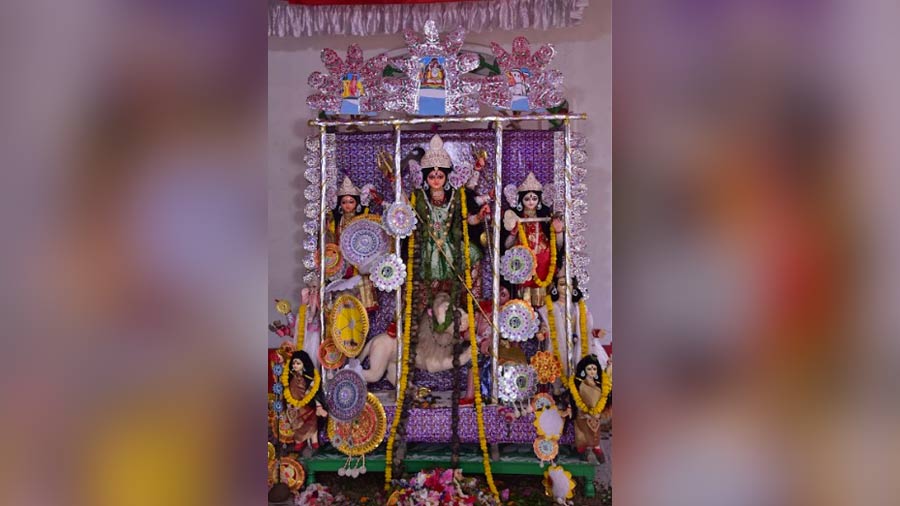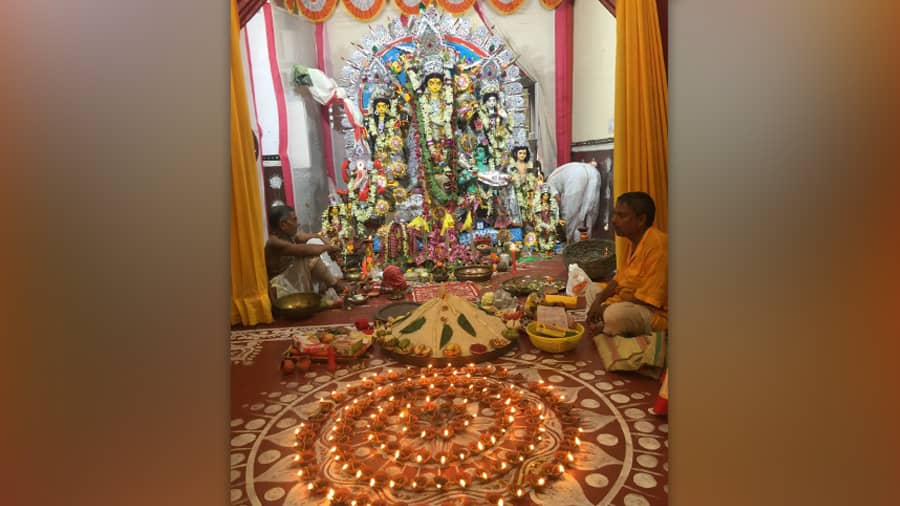As you travel towards rural Bengal during Durga Puja, you may observe a distinct change in the style of idols from what you see in Kolkata. You will notice the face of the goddess is not similar to that of the city’s traditional Pujas, and instead seems to be influenced by the local folk art. The Durga idol of the Biswas family at Mankar in East Burdwan (Purba Bardhaman) is a good example.
The ancestors of the Biswas family were from Murshidabad. One of them was employed as a Khajanchi (treasurer) under Nawab Alivardi Khan. The Nawab rewarded him after he saved some important papers risking his life. Apart from monetary awards, Alivardi bestowed him with the title of “Biswas”. Henceforth, the family started using the title Biswas, instead of their earlier surname, Gangopadhyay, and shifted to Dignagar in East Burdwan district. They started selling Tussar silk, which brought the family a lot of riches, especially during the time of Rammohan Biswas. Rammohan was childless. On the advice of a holy saint, he left his Dignagar residence and settled in Mankar, where he started this Durga Puja around 350 years ago. Eventually, Rammohan was blessed with a child, who he believed to be the Goddess’s blessing. The child was thus named Durgapati.
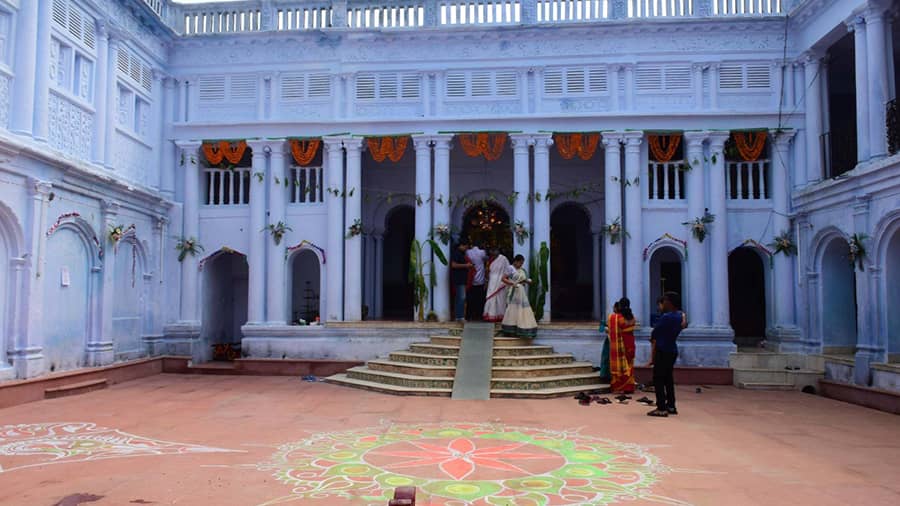
A view of the Durga dalan at Biswas Bari in Mankar
The family saw more riches during the period of a descendant Mahesh Chandra Biswas, who, as per family members, was the dewan of one of the rulers in Kashmir. The palatial Durga dalan and the saat mahala residence (house with seven parts) were built during his lifetime.
The face of the Goddess seems to be inspired from Patachitra paintings of Durga and adheres to indigenous aesthetics when compared to deities in urban areas. The Goddess is red in colour instead of traditional yellow and is adorned with Daaker Saaj (Yellow and Golden Foil decoration). Her considerably large eyes draw attention. The grand Durga dalan is well maintained and is one of its kinds.

Outer view of the Durga dalan at Biswas Bari
The 10th generation of the family is conducting the Durga Puja this year. Puja is conducted as per Shakta rituals. The Kathamo Puja happens during Ratha Yatra. After the invocation of the goddess on Panchami, Bodhan is performed on Sasthi. On Panchami, the Goddess is adorned with weapons. On Sasthi, the idol is adorned with traditional jewelleries. On Saptami, all the men in the family, especially those who have attained the age of wearing Paite, carry the Navapatrika and place it inside a dola (small palanquin) made of German silver, for the holy bath in the nearby waterbody. Before the puja begins, the women bring the household deity of Lakshmi and place it beside the Goddess on the Durga aalan.
Annabhog, or the rice meal, is offered to the goddess every day. However, cooking of annabhog is done only by the Brahmin men of the household. Women are given a break from this activity as per the family ritual. On Saptami, Ashtami and Navami, various types of fried vegetables are offered to the Goddess, along with Pulao and Khichdi. Also, on the three days of Puja, a goat is sacrificed to the Goddess. Mankar is famous for a sweet named Kadma. On Ashtami, a Kadma weighing 7kg to 8kg is offered to the Goddess.
Earlier, cannons were fired during Sandhi Puja. Now, that has stopped. Instead, Sandhi Puja starts with a blank fire of a gun. Four men stand with glowing mashals on four sides of the Thakurdalan and illuminate the area. On Navami, the entire village is invited and prasad is served at Biswas Mansion. Over 2,500 people are invited. After Navami Puja, the family members visit the nearby temple of Panchanan. Another goat is sacrificed there.
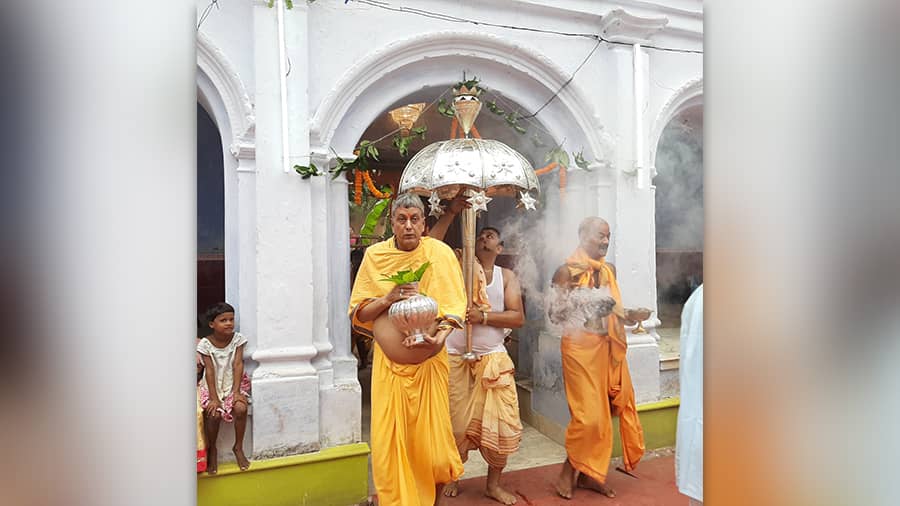
The priest carrying holy silver ghot
On Dashami, the Navapatrika is carried along with the silver ghot (holy pot) to the waterbody adjoining the house. The content from the ghot along with the Navapatrika is immersed in the pond. The Goddess is brought down on the courtyard in a traditional manner and the women bid her goodbye before the idol is finally immersed.
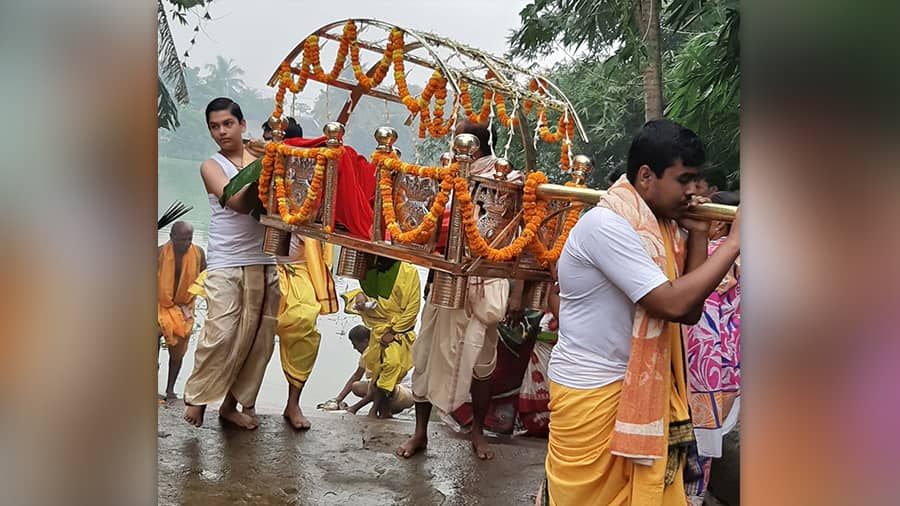
The Navapatrika is being carried in a German Silver dola to the nearby waterbody for a bath
Mankar is 146 km north-west of Kolkata. Take a day off from the urban crowd and embark on a long drive to Biswas family’s Durga Puja at Mankar. The family is very welcoming to guests visiting their Puja. On the way you can visit another Durga Puja of the family at Dasghara, which recently became more famous after the shooting of the film, Golondaj. There are ample eateries on the Durgapur Expressway.
